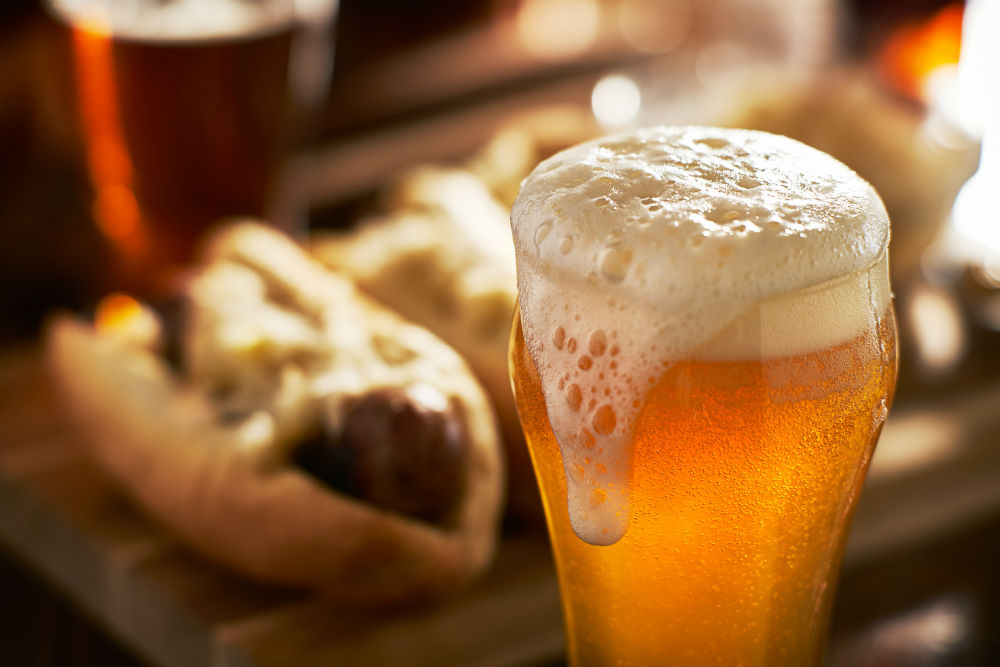Right Co2 Pressure on Your Kegerator: Keep Your Beer Fresh
Just having a Kegerator to store your beer is not enough to keep your beer from getting foamy. A Kegerator is like a fridge, but you are not using it to store vegetables or fruits, but beer which is mainly carbonated and acidic in nature.
Therefore, you will need to apply the right Co2 pressure on your Kegerator to keep it from getting foamy.
General Settings
So, what is the required Co2 pressure to be applied on your Kegerator? The answer can be a little more complicated than you think.
Most American Breweries recommend setting the Co2 pressure between 12 to 14 psi. This is the common pressure that is applied to most of the Kegerators.
However, this can change depending on many factors, such as altitude, type of keg, type of Co2 cylinder, the diameter of your beer lines and the heaviness of the beer. It is up to you to adjust your regulator to apply the most suitable Co2 pressure on your Kegerator.
At High Altitudes
Ideally, your Co2 pressure should allow your beer to flow out smoothly and not forced out. On high altitudes, adjusting your Co2 pressure becomes a little tricky.
You will need to apply higher pressure than normal; otherwise, the beer will be degassing or losing its carbonation.
Also, if the outside temperature is very low, then you should consider raising your Kegerator temperature a bit. Raising the temperature will keep your beer from freezing and also add the required taste at high altitudes. If your beer is balanced, then there will be no visible lines while dispensing.
Faucet Temperature
The temperature of your faucet is also one of the main factors that can cause a foamy beer flow. It is a well-known fact that warm beer contains low amounts of Co2, so if your faucet is warm and the beer is nicely carbonated, you will still have a foamy beer until your faucet cools down. The Kegerator you are using is the reason for your faucet to be warmer or cooler.
A warmer faucet can cause a slower pour and a longer line, but the best way to keep your Kegerator at a good pressure is to ensure that your faucet remains cold. If you can afford a glycol coolant, that can be the end of your problem.
However, having a glycol coolant is a luxury and only some bars have them. If you are a homebrewer, you can simply install fans to circulate air inside your Kegerator to keep your faucet cool.
Adjusting Your Co2 Regulator
It is important to know how to adjust your Co2 regulator if you want to adjust it to the desired pressure. This part is not as tricky as it sounds; in fact, it is very simple.
You will need some practice to master the art of it, but you will get the hang of it eventually. The adjustments mentioned are for a commonly used Kegerator – if you have a special one, the adjusting procedures would be already mentioned.
- Begin with opening the gas cylinder, and make sure the shut-off valve on the regulator is completely closed. Next, switch on the valve of the gas cylinder completely.
- You need to loosen the regulator adjustment nut. Rotate it counter-clockwise to loosen it and then using a flat headed screwdriver, rotate it clockwise until the output pressure gauge shows the desired pressure, 12 psi would be the ideal choice.
- Once you are done with the adjustments, you need to allow the Co2 gas to flow to the coupler. Make sure your keg coupler is completely locked and then open the shut-off valve to allow the gas flow from the regulator to the keg coupler. You will hear the sound of your Keg pressurizing. The readings on the gauge will drop for a moment and return to its original reading once it is equalized.
- You can see that your keg coupler has a pressure release valve. Pull the pressure release valve briefly to allow the gas to flow into the vent, which is the main purpose. You can hear a loud hissing sound once you pull the valve. This is very important to get the right Co2 pressure on your Kegerator, but unfortunately many people tend to ignore it. It actually allows the gas to flow through the regulator, which will ultimately give you more accurate readings.
- Check the pressure gauge again, and if needed re-adjust it to the desired pressure. Always make sure to follow up with pulling the pressure release valve.
- Check to see if your beer flows properly out of the faucet. In case the beer falls wildly, cloudy or tastes bad, check the beer type, elevation criteria and other factors that could cause it, and then re-adjust the settings accordingly.
Checking for Co2 Leaks
There are often situations where your Co2 gas cylinder does not provide enough service. One Co2 cylinder should be enough to dispense up to 4 Kegs.
If this is not happening, there might be Co2 gas leaking somewhere. Well, the good thing is you can always check for leaks and cover it up.
In order to check for Co2 leaks, all you have to do is drop some soapy water on the Co2 cylinder and the regulator connection. If you see soapy bubbles forming, then tighten or re-attach the regulator net connection.
You might be thinking that there is a lot to do just to maintain the Co2 pressure on your Kegerator and if you don’t, the whole Keg can become sloppy and could be wasted. This might sound very complicated or difficult before you try it, but once you get the hang of it, you will be advising others to do the same.
For a true beer lover, there is nothing that can stop him/her from getting the best beer, so you might as well try it. Anyway, a good glass of beer after the hard work will take the pain away.

